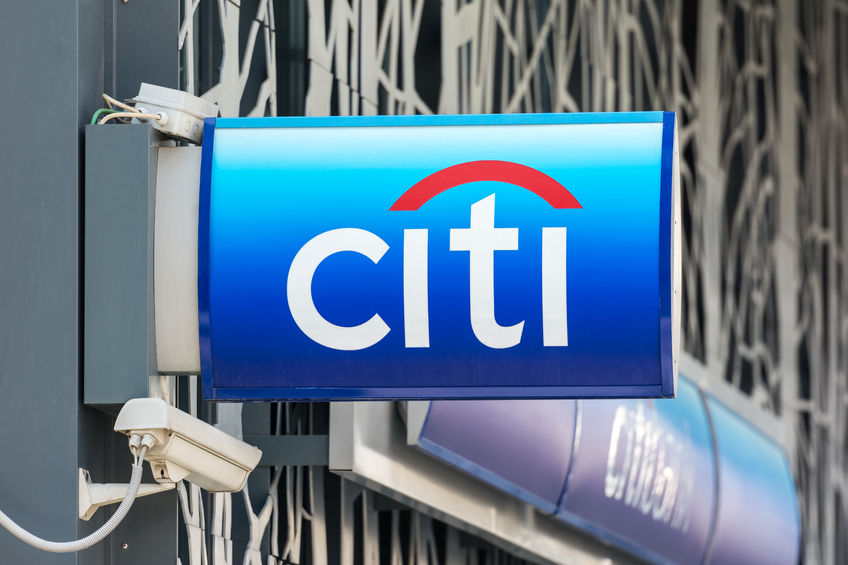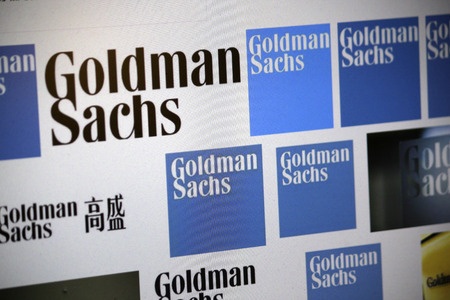Banking
Cashback-Crazed Enzo Launches Deposit Accounts
January 4, 2022 Enzo Wealth, the fintech launching a neobank-esque software through Blue Ridge Bank finally came out with their initial account offerings to a select group among the 35,000 people on the account holder’s waitlist. Since the announcement, the company has marketed themselves by offering attractive cashback and equity-based incentives to account holders. According to an email sent out to the selected invitees by CEO Jeremy Shoykhet, the company is still working out the kinks to their offerings.
Enzo Wealth, the fintech launching a neobank-esque software through Blue Ridge Bank finally came out with their initial account offerings to a select group among the 35,000 people on the account holder’s waitlist. Since the announcement, the company has marketed themselves by offering attractive cashback and equity-based incentives to account holders. According to an email sent out to the selected invitees by CEO Jeremy Shoykhet, the company is still working out the kinks to their offerings.
“We launched the Enzo Early Access Beta a few weeks ago, and are thrilled with the progress so far,” said Shoykhet. “We’ve seen over one-thousand customers join the early access beta. We’ve also been excited to see the uptake in our Rent Payment Cashback Program, with a current run-rate of $1mm of rent payments we will be processing annually.”
Invited waitlist members who sign up for the trial will not only receive a $50 bonus, but any money they spend that may qualify for cashback in the future will be retroactively funded to accounts, should money spent now be qualified for cashback at a later date.
The trial period includes the originally offered 1.5% cashback on rent payments, but with a stipulation during the trial period. Enzo customers seeking cashback on rent must pay rent via ACH from the landlord’s payment portal. According to an email sent by Shoyket to invitees, Enzo account holders will be able to receive the cashback on rent regardless of their payment method as launch progresses.
Enzo caught eyes when it offered wild cashback offerings like 10% on Ubers, 5% on DoorDash, and 1.25% on pretty much everything else. Enzo accounts also pay out a 0.50% APY, which the company claims will be increased as their capabilities allow.
Shoykhet hinted at Enzo continuing to grow as the trial period takes stride. “We are excited to continue growing the platform, adding more features, and inviting more folks to use the product.”
Citi Uses Branding and Fintech to Bring Merchants Directly to Funders
December 3, 2021 Citi’s release of Bridge, a virtual loan broker offering merchants a three step process to apply for capital through over a dozen banks, has branched out across seven states and is continuing to grow four months in— according to recent LinkedIn posts from Citi employees.
Citi’s release of Bridge, a virtual loan broker offering merchants a three step process to apply for capital through over a dozen banks, has branched out across seven states and is continuing to grow four months in— according to recent LinkedIn posts from Citi employees.
“I am excited to announce I have been working on a new and innovative platform along with the Citi team for the past few months!” wrote Caitlyn Boyle, Assistant Vice President and member of the team who designed Bridge. “I am extremely proud to be part of such an amazing team, and to assist in building out a great platform to connect small and medium sized businesses with local, regional, and community banks.”
“If you are looking for a loan, do not hesitate to visit our platform!” Boyle wrote.
Richard Banziger, Head of Citi’s U.S. Commercial Bank, commented during the launch of the program about Bridge’s potential to not only improve the application process for merchants, but how the program gives access to capital that will be given to minority business owners who may have never been able to get access to that capital in the past.
“Citi believes in the power of local, small businesses and continues to find ways to support businesses that are the foundation of communities across the U.S. Citi funded loans totaling more than $5 billion as part of the Small Business Administration’s Paycheck Protection Program during 2020 and 2021.”
“As both a lender and a community stakeholder, we have a deep understanding of the problems businesses face when trying to navigate the borrowing process” said Banziger. “We are committed to finding digital solutions that can make the process easier, more seamless and more equitable.”
According to Citi, Bridge’s goals are broken down into five points. They hope to create liquidity and access to capital, modernize and automate prospecting, add digitization, transparency, and standardization to the loan process, continue to digitize small and medium sized business lending, and democratize the loan process for lenders and brokers.
“Citi prides itself on encouraging a spirit of entrepreneurship among its employees to solve financial access issues and improve digital offerings for our clients and community partners,” said Vanessa Colella, Citi’s Chief Innovation Officer.
Loan options range from as little as $100,000 to as high as $10,000,000.
Marcus By Goldman Sachs Will Become Goldman Sachs Marcus
November 12, 2021 Brace yourself for the craziest rebrand in fintech history.
Brace yourself for the craziest rebrand in fintech history.
Just kidding.
Marcus by Goldman Sachs is changing its name to Goldman Sachs Marcus.
:::Mind Blown:::
The news, publicized by Forbes, said that the bank now feels more confident in leading the division with its own name first after initially applying caution.
Goldman found that their customers had a strong brand affinity with the name ‘Goldman Sachs’ and wanted to “be closer to the brand,” said Stephanie Cohen, Goldman’s Global Co-Head of Consumer and Wealth Management.
The full scoop can be read at Forbes.
LendingClub Finding It Pays to be a Bank
November 1, 2021 At $48.75, LendingClub stock recently surpassed the highest valuation it has had since January 2016.
At $48.75, LendingClub stock recently surpassed the highest valuation it has had since January 2016.
Successfully becoming a bank earlier this year and dropping its peer-to-peer lending business for good, the company is showing the benefit of that by recording a net income of $27.2M in Q3.
And its loan business is still strong. LendingClub originated $3.1B in loans last quarter, up from the $2.7B in Q2.
“When we launched back in 2007, LendingClub’s vision was to leverage technology, data and our marketplace model to transform the banking industry,” said company CEO Scott Sanborn on the earnings call. “We began by bringing a traditional credit product, the installment loan into the digital age by moving it online, broadening access, lowering costs and delivering a fast and frictionless experience for borrowers, all while delivering attractive risk-adjusted returns for loan investors.”
In 2014, however, it was their designation as a “tech company” rather than as a financial company that saw their valuation surge to nearly 3x higher than what it is now. (Note: The company did a reverse 1:5 stock split in 2019). But now as a bank, that valuation is surging back.
“Now with the added funding benefit of our bank, we’re able to generate positive unit economics,” Sanborn said.
Canada is Looking Forward to Open Banking
October 4, 2021 “It’s a fairly big deal,” said Tal Schwartz, Senior Advisor to the Canadian Lenders Association, when discussing the Canadian government’s renewed interest in alternative lenders after the recent Canadian election. As potential government officials from both parties discussed ideas about open banking in their election campaigns, such a conversation had been quelled by the “Big Five” Canadian banks— until now.
“It’s a fairly big deal,” said Tal Schwartz, Senior Advisor to the Canadian Lenders Association, when discussing the Canadian government’s renewed interest in alternative lenders after the recent Canadian election. As potential government officials from both parties discussed ideas about open banking in their election campaigns, such a conversation had been quelled by the “Big Five” Canadian banks— until now.
“The closer we get to some kind of entrenched regulatory framework, the better positions fintechs will be in to actually compete, get access to financial data, and raise money in an environment where there is regulatory certainty,” said Schwartz.
In August, the Canadian department of Finance welcomed a Final Report from the Advisory Committee on Open Banking that showcased a plan to modernize the Canadian financial regulatory system, with open banking and fintech in mind.
“Consumer-driven finance, or open banking, is already part of Canadians’ lives,” said Chrystia Freeland, Canada’s Deputy Prime Minister and Minister of Finance, in the report.
“Many use digital services every day to manage their money, to budget for expenses, and to make investments. Working towards a regulated, made-in-Canada system will make sure that we continue to enjoy a strong, stable, and innovative financial sector that is globally competitive, promotes consumer choice, prioritizes data privacy, and contributes to economic growth,” Freeland continued.
Schwartz said that the traditional oligopolistic structure of Canadian banking can offer advantages in times of financial crisis, but not when the government is shelling out money to help businesses during pandemic-related shutdowns.
 “The reality was, if you’re a small business, you don’t have a credit relationship with a big bank, the only credit relationship you have is with an alternate lender,” said Schwartz. “By distributing money through big banks, in one sense, you’re not servicing customers the way they want to be served, and you’re cutting oxygen to a flourishing part of the innovation economy in Canada.”
“The reality was, if you’re a small business, you don’t have a credit relationship with a big bank, the only credit relationship you have is with an alternate lender,” said Schwartz. “By distributing money through big banks, in one sense, you’re not servicing customers the way they want to be served, and you’re cutting oxygen to a flourishing part of the innovation economy in Canada.”
Unlike in the United States, the Canadian government gave exclusive access of allocation to pandemic-induced federal assistance loans to the Big Five banks, leaving small business lenders relatively out to dry during that time. When asked about what issues he would like to see the new administration tackle first when it comes to alternative lenders, Schwartz mentioned the allocation of this type of money moving forward.
Other institutions outside of big banking in Canada are making strides in their effort to compete. Fintech giant Stripe announced hiring sprees for their new Toronto office last Thursday. Then there’s Nuula, a startup that aims to build a user-centric financial super app, announcing $120M in funding in early September.
To reach its full potential, Canadian fintech companies need the access to more data. The report recognizes the acknowledgement of the necessity this data is to fintech companies. “The scope of Canada’s open banking system in its initial phase should include data that is currently available to consumers and small business through their online banking applications,” it says. “Financial institutions should be allowed to exclude derived data – described as data enhanced by financial institutions to provide additional value to their consumers, such as internal credit risk assessments” the report reads.
“Historically, there hasn’t been very tech friendly or [Big Bank] challenger friendly regulations,” Schwartz said. “This is really the first time we’ve seen the political parties even mention issues of open banking and saying this will be a priority for our next government.”
“This has given the industry a lot of hope,” said Schwartz.
Marcus Has Reached $100 Billion in Deposits
September 24, 2021 Marcus by Goldman Sachs, the prestigious investment firm’s attempt at being a conventional bank, announced that they have over $100 billion in deposits after just five years in operation. The online platform that began as an invite-only savings platform has transformed into a full-blown consumer bank, operating on the futuristic model of operating savings and CD accounts digitally.
Marcus by Goldman Sachs, the prestigious investment firm’s attempt at being a conventional bank, announced that they have over $100 billion in deposits after just five years in operation. The online platform that began as an invite-only savings platform has transformed into a full-blown consumer bank, operating on the futuristic model of operating savings and CD accounts digitally.
“If you told me we would accomplish so much in just five years from launch, I would have said you were crazy,” wrote Harit Talwar in a LinkedIn post on Thursday that announced his retirement from Marcus. “It shows that nothing is impossible when you have the best people.”
In his post, Talwar praised Marcus’ desire to take risks, acting as a separate entity while having to operate within the confines and upkeep of the Goldman Sachs reputation.
 “We had the audacity to think big, and it’s safe to say we proved the skeptics wrong – eight million customers, $100 billion in deposits, nearly $10 billion in card and loan balances, $1.5 billion in run rate revenue, two J.D. Power wins and partnerships with the top brands in the world including Apple, Amazon, Walmart, JetBlue, AARP, General Motors and more,” Talwar wrote.
“We had the audacity to think big, and it’s safe to say we proved the skeptics wrong – eight million customers, $100 billion in deposits, nearly $10 billion in card and loan balances, $1.5 billion in run rate revenue, two J.D. Power wins and partnerships with the top brands in the world including Apple, Amazon, Walmart, JetBlue, AARP, General Motors and more,” Talwar wrote.
Marcus launched in 2016 with some of the best interest rates in the banking industry. It introduced the Goldman Sachs brand to an entire new group of customers by offering up high interest rates on accounts with no fees, which was nearly unheard of at the time. Two years after launch, Marcus had over $35 billion in deposits.
Marcus’ path was almost completely different prior to its launch. The original idea prior to Marcus was a platform called Mosaic, a banking concept meant for borrowers with good credit that were looking to refinance other debt.
In his retirement post, Talwar credited the camaraderie that developed between employees as a major factor resulting in the success of Marcus. “The team has given more than perhaps in prior jobs, but maybe that is the price of building something this extraordinary at an unprecedented pace,” Talwar wrote. “Yet by sharing those experiences in the trenches, we’ve made lasting friendships and redefined what a consumer business looks like.”
The outlook for Marcus is seemingly endless. Online banking is trendier than ever, and the outlook for banking is losing the brick-and-mortar mentality.
Experts also believe that Marcus has helped Goldman Sachs’ progress into new markets. “Marcus has taken advantage of a core strategic advantage—[Goldman Sachs’] lack of a preexisting deposit customer base— to prove that digital deposit gathering at scale is possible for a large institution,” Todd Baker, Managing Principal of Broodmoar Consulting and Senior Fellow at Columbia University told deBanked.
When the company first came about, deBanked reported that Marcus may be poaching customers from a peer-to-peer lender named LendingClub. The two companies are now more alike than ever given that LendingClub is also now a bank. LendingClub, still new to the banking scene however, had only amassed $2.5B in deposits as of June 30, 2021.
It seems that Marcus may have been ahead of the curve when it comes to fintech’s place in traditional banking, racking up staggering figures across the board and showing young upstart competitors just how strong it is.
Cannabis Boom Exposes Difficulties in Lending
September 15, 2021 The legalization of cannabis across the U.S. has exposed an interesting opportunity for banks and small business lenders. With tons of capital, insane amounts of cash flow, and an industry outlook that couldn’t be better, banks and lenders should be swarming in droves to get their hands on a piece of the legal marijuana action. Seemingly a match made in heaven, lenders and cannabis cultivators are running into some serious trouble when it comes to how the cash crop operators manage their businesses’ finances.
The legalization of cannabis across the U.S. has exposed an interesting opportunity for banks and small business lenders. With tons of capital, insane amounts of cash flow, and an industry outlook that couldn’t be better, banks and lenders should be swarming in droves to get their hands on a piece of the legal marijuana action. Seemingly a match made in heaven, lenders and cannabis cultivators are running into some serious trouble when it comes to how the cash crop operators manage their businesses’ finances.
“We had too much cash to keep in one place,” said Charles Ball, the owner of Ball Family Farms, a wholesale grow operation based in Los Angeles. By stashing cash in different safe-houses around LA, Ball had to operate his completely legitimate and legal business like an illegal operation. “Traditional banking wasn’t an option for us,” Ball said.
“We used to drive the cash around,” said Ball. For recent renovations of lighting fixtures, Ball had to pay $125,000 in cash to the company who did the service for him. Ball also paid taxes in cash, a process in which he had to walk into a Los Angeles government building with $40,000 cash on his person. At the time, there was no bank that was willing to hold the cash for him — even for tax purposes.
Prior to going fully cash, Ball did do business with some big banks, but he realized quickly that they weren’t interested in servicing his cash upon learning what his business was doing.
 “They closed my account for wearing a shirt with my business name on it, they put two and two together,” said Ball, when referencing the closing of two accounts with Bank of America and Chase after representatives of the banks saw him wearing his company shirt to make deposits. One of the biggest difficulties of running a cannabis distributor isn’t the growing or the distribution of the product, it’s what to do with the money, according to Ball.
“They closed my account for wearing a shirt with my business name on it, they put two and two together,” said Ball, when referencing the closing of two accounts with Bank of America and Chase after representatives of the banks saw him wearing his company shirt to make deposits. One of the biggest difficulties of running a cannabis distributor isn’t the growing or the distribution of the product, it’s what to do with the money, according to Ball.
“We had no way of banking,” he said, up until February of this year, when he was able to secure his first type of deposit account with a local bank in the Los Angeles area that was fully aware of what his business was doing. “I have to pay more fees, and I don’t get the same type of customer service, everything is different,” Ball said.
With service fees on his deposit account between $2,000-$3,000 per month, the security of doing business with a bank must be worth the price. When pursuing a loan with that bank to expand his operation however, the lending process was halted at the last second after federal regulators told the bank they wouldn’t allow the deal to go through.
“We were denied on the approval date [of the loan],” said Ball. According to him, the bank told him the FDIC stepped in and killed the deal. Once again, Ball Family Farms was forced to explore other options outside of banking, such as exploring renovation options through landlords or simply waiting until the cash is on hand to make the move. “The banking system in this industry is very flawed,” said Ball.
“We’ve never taken private investor money,” Ball said when asked about whether he had explored any other avenues of receiving a loan. “We took [the start] slowly and it works, we are a ground up operation.”
This problem is not unique to Ball Family Farms. Legal cannabis cash flow has been a major issue since legalization first took place in the states. It seems like local governments want the tax revenue, but the bank’s regulators want to make it difficult for lenders to get their hit off the cash pipe until the federal government changes the law on their end.
The opportunity for funding in the industry isn’t going unnoticed however, as cannabis-exclusive funders and brokers are beginning to pop up across the U.S.
Judy Rinkus, for example, CEO of Seed to Sale Funding, is a Michigan based broker who works exclusively with cannabis businesses.
 “[The industry’s] biggest problem is simply finding a lender who isn’t prohibited from lending to cannabis-related concerns,” said Rinkus. According to her, one of the biggest issues is the infancy of the industry, as many cannabis wholesalers and retailers just haven’t been around long enough to be reliable borrowers.
“[The industry’s] biggest problem is simply finding a lender who isn’t prohibited from lending to cannabis-related concerns,” said Rinkus. According to her, one of the biggest issues is the infancy of the industry, as many cannabis wholesalers and retailers just haven’t been around long enough to be reliable borrowers.
“Most businesses have been established for 3 years or less, they haven’t kept good financial records, and accept a lot of cash payments, and they lack sufficient collateral,” Rinkus said.
Rinkus stressed the importance that real estate plays in giving cannabis businesses borrowing power. “Having real estate to pledge as collateral is key,” she said. “There are ways to get other types of loans, but they are often enormously expensive and are limited to no more than 10% of an entity’s historic revenues.”
Rinkus’ outlook on the industry remains positive, and she remains a supporter despite the difficulties associated with cannabis lending. “Businesses in this space are the true American entrepreneurs,” said Rinkus. “In many areas of the country, they are creating jobs and wealth for folks that would otherwise not have the same chances.”
The outlook on the industry is bright. More states are pushing for legalization, social taboo of marijuana is relatively nil, and the potential of an untapped industry in the eyes of both government and banking are becoming too good to pass up. As the industry begins to cultivate its presence, look for the money surrounding cannabis to creep its way into fintech sooner than later.
IRS Snooping Flexes Government Power, but May Drive Crypto
September 14, 2021 To fight tax evasion, the federal government wants the IRS to track any account in the United States that transacts more than $600 in or out over the course of a year. The tracking will apply to banks and other financial institutions. The feds claim that they will use any found tax dollars to help finance the administration’s new $3.5 trillion spending plan.
To fight tax evasion, the federal government wants the IRS to track any account in the United States that transacts more than $600 in or out over the course of a year. The tracking will apply to banks and other financial institutions. The feds claim that they will use any found tax dollars to help finance the administration’s new $3.5 trillion spending plan.
Such a move could push a suspicious populace into crypto, where records, however openly recorded on blockchains, could potentially obscure the parties involved.
Banks have fought against the government’s push to share account transactions, as they argue it will be a major invasion of privacy. This will undoubtedly create an entire new workload for them as well, as the banks will have to provide intricate details on most of the accounts on their books — an unprecedented task.
“I don’t believe that much is going to change,” said Yoel Wagschal, a CPA. Wagschal stresses to his clients to always live their life as if the government has access to the information about their spending habits for the sake of their wellbeing.
“The issue at hand is how far this is going to [go], how far the government’s reach will be,” said Wagschal. “When a government body gets power, they don’t give it back. Look at the power wagon they are on.”
As crypto becomes more of an avenue to store and invest money, it may also be a new channel for coin holders to keep their finances shrouded behind additional layers from the federal government.





























